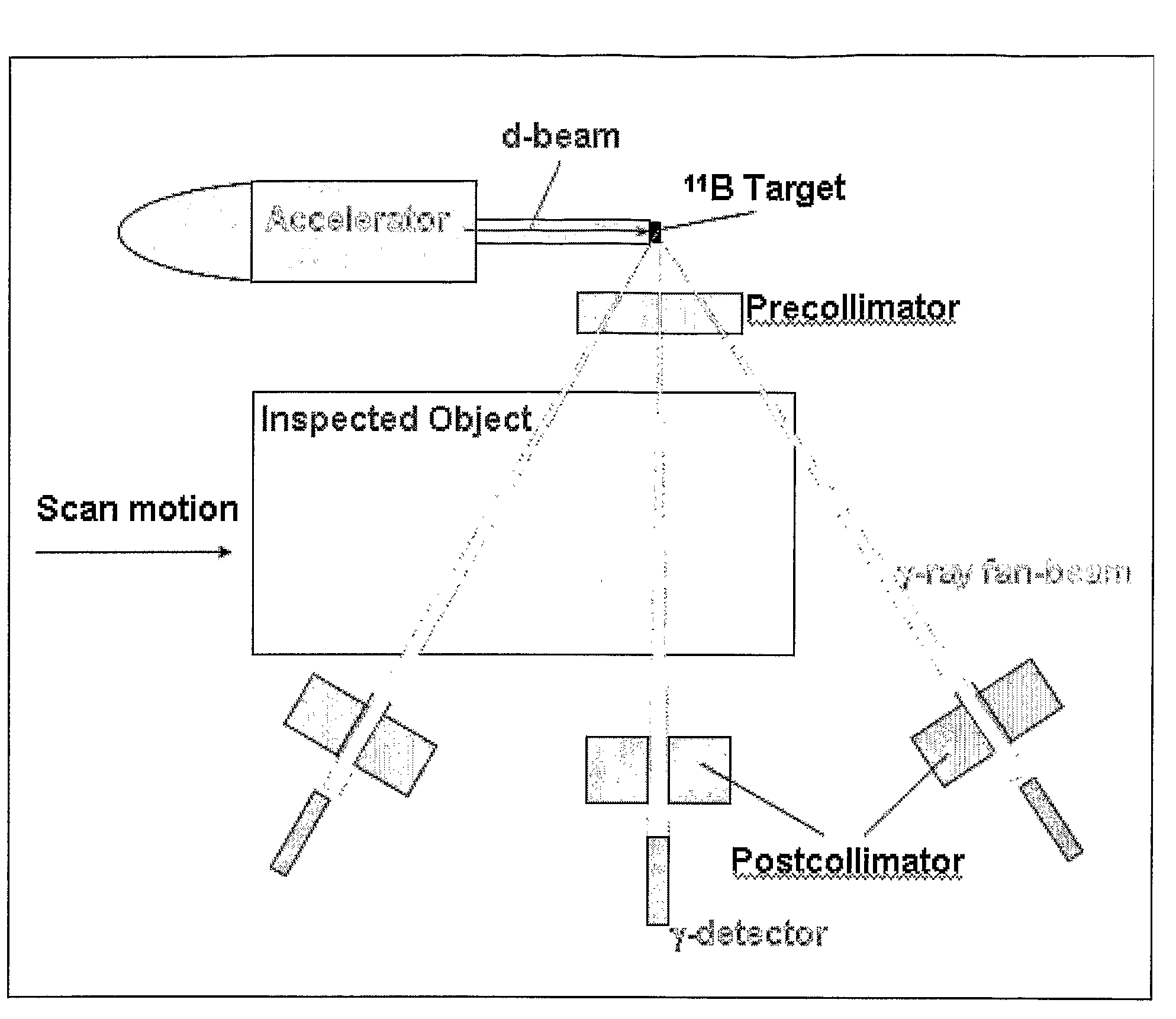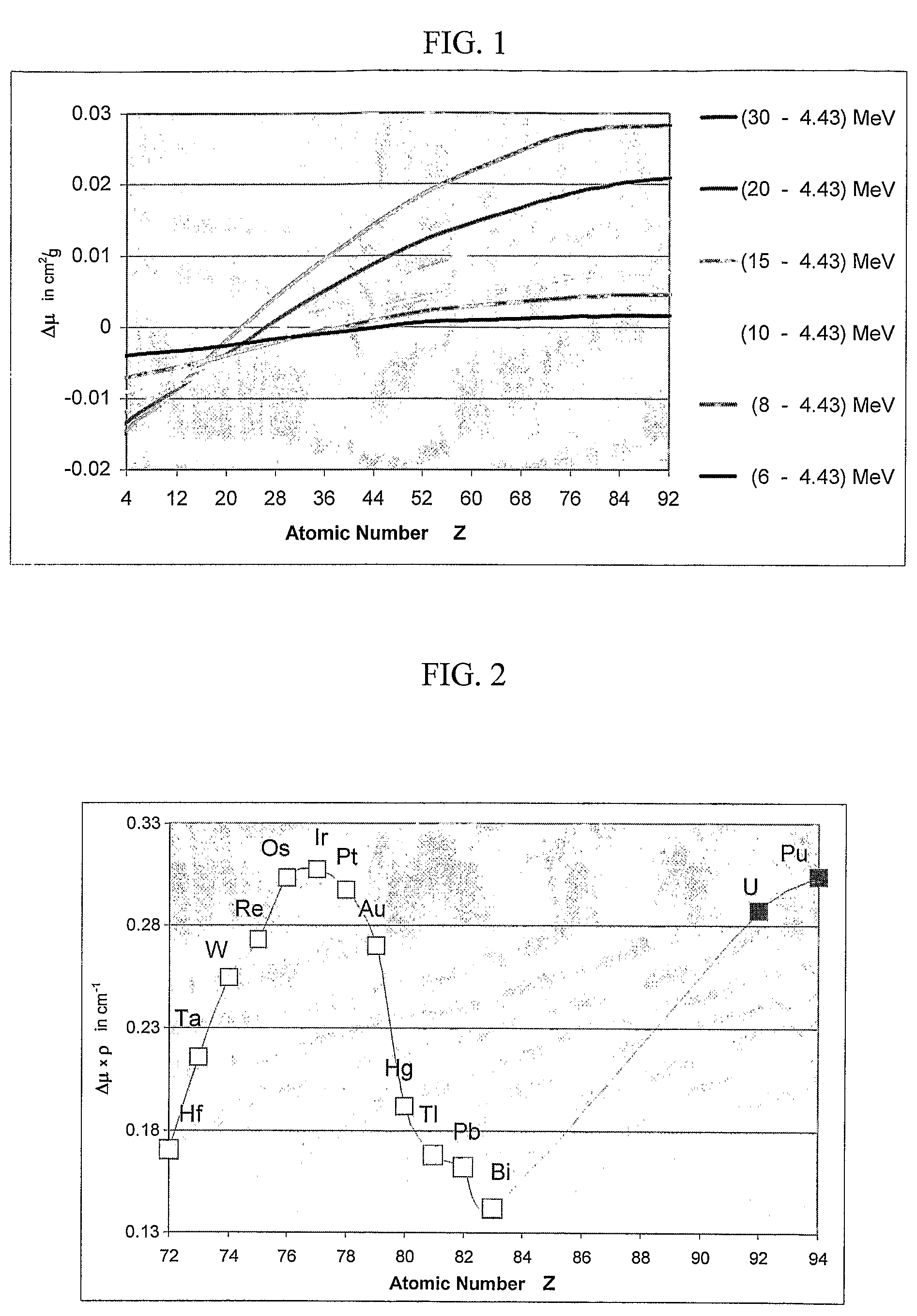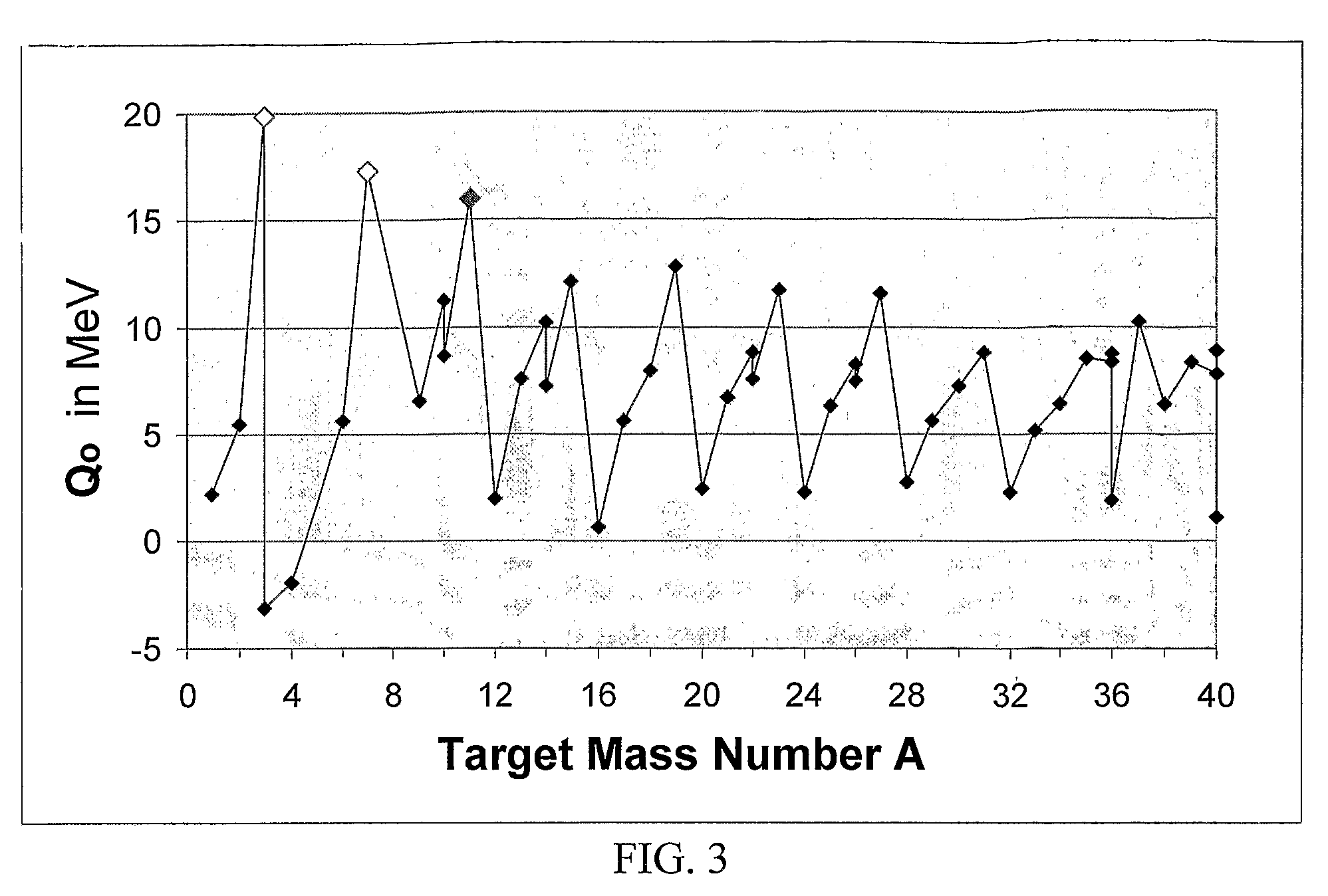Method and system for detecting substances, such as special nuclear materials
a technology of special nuclear materials and detection methods, applied in the field of special nuclear materials detection methods and systems, can solve the problems of large-area neutron detectors, gamma detection can be thwarted with relative ease, and the severity of detection problems tend to increase sharply, so as to achieve high image clutter
- Summary
- Abstract
- Description
- Claims
- Application Information
AI Technical Summary
Benefits of technology
Problems solved by technology
Method used
Image
Examples
first embodiment
In-Beam, Reaction-Induced 12C γ-Ray Yields
[0058]In the DER context, it is clear from FIG. 4 that the 4.43 MeV gamma-ray is a prime candidate for Eγlow. With respect to Eγhigh, the most attractive candidates are the discrete level at 15.09 MeV, accessible via the following reactions 11B(p,γ), 11B(d,n), 10B(3He,p) and 13C(3He,α) and the Giant Dipole Resonance (GDR) around 23 MeV (accessible via 11B(p,γ) at Ep=6-10 MeV). The latter decays predominantly to the 12C ground-state and first excited-state via gamma radiation referred to hereinbelow as γ0 and γ1, respectively.
[0059]Nuclear Reaction Yields
[0060]The expected thick-target gamma-ray yields (per projectile) of the 15.09 MeV line and the GDR lines in the above-mentioned reactions were obtained by energy-integration of the published experimental cross-sections and are shown in FIG. 5.
[0061]Several comments on these reactions already appear in the caption to FIG. 5 and need not be repeated. Clearly, the choice of reaction defines an ...
second embodiment
Out-Of-Beam 12C(4.43 MeV) Activation Yields
[0138]The second embodiment describes in detail Measure #8 mentioned hereinabove, which is an option for scanning limited container regions with particularly clean gamma spectra, making use of in-beam prompt 15.09 MeV and out-of-beam delayed 4.43 MeV γ-rays. This option is based on the same 11B+d projectile-target system of the first embodiment, but via two different reaction channels.
[0139]The following is an explanation of the principal feeding and decay modes underlying the spectral lines observed in FIGS. 6 and 7.
[0140]Apart from elastic scattering, the dominant nuclear reaction channels at incident energies Ed[0141]11B(d,n)12C and 11B(d,p)12B for which T1 / 2=20.2 ms
[0142]The cross-sections for both (d,n) and (d,p) reaction channels are typically 20-30 mb to each of the energetically-accessible states (including the 12C 15.09 MeV state). They account for the intensities of the 0.95 & 1.67 MeV (12B), 4.43 & 15.09 MeV (12C) lines seen in t...
PUM
| Property | Measurement | Unit |
|---|---|---|
| photon energy | aaaaa | aaaaa |
| photon energy | aaaaa | aaaaa |
| photon energy | aaaaa | aaaaa |
Abstract
Description
Claims
Application Information
 Login to View More
Login to View More - R&D
- Intellectual Property
- Life Sciences
- Materials
- Tech Scout
- Unparalleled Data Quality
- Higher Quality Content
- 60% Fewer Hallucinations
Browse by: Latest US Patents, China's latest patents, Technical Efficacy Thesaurus, Application Domain, Technology Topic, Popular Technical Reports.
© 2025 PatSnap. All rights reserved.Legal|Privacy policy|Modern Slavery Act Transparency Statement|Sitemap|About US| Contact US: help@patsnap.com



